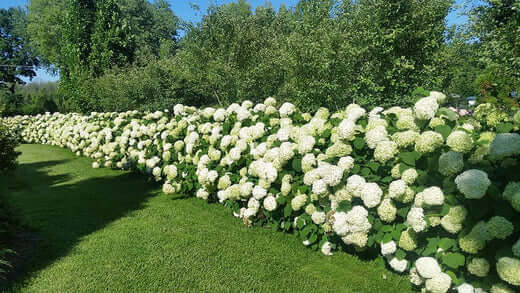Smooth Hydrangea - Hydrangea aborescens
The smooth hydrangea, also known as the wild hydrangea or seven bark (which refers to the plant's adaptation of successive layers of stem bark that peel off to display various distinct colors), is a low-growing shrub species with rich, luscious green foliage. That is well-known for its wide adaptability to various soil types (although it grows most optimally in nutrient-rich, moist soil).
This deciduous shrub is primarily native to the eastern portion of the United States, where it favors partial sun exposure, allowing it to bloom beautifully in the Summer months. Its upright figure upon maturity allows it to reach a maximum height of 10 feet, despite being more commonly observed between three and seven feet with an average spread of three to five feet. The smooth Hydrangea's amplified adaptability permits it to be grown favorably in zones 3-9 with a medium-paced growth rate.
Create a beautiful scenery in your lawn
The dark green foliage, along with the vibrant white flowers produced between May and July, makes this shrub a great addition to any lawn setting and attracts a pleasant diversity of organisms, namely pollinators. The oval-shaped, serrated leaves are commonly observed to be about eight to eighteen centimeters in length, with trichomes on the lower surface that are restricted to the central veins of the plant.
This plant is most often utilized for ornamental or decorative purposes. It turns out to be the coldest hardy hydrangea species in the United States, with individual plants ranging from southern New York to the Florida panhandle and as far west as the eastern portion of Oklahoma.
Furthermore, this plant also displays medicinal properties in the historically cultivated roots by Native Americans and early settlers to treat kidney stones. In short, this rich deciduous shrub is glorified by botanically passionate homeowners looking to make their property stand out from the rest with a beautiful display of foliage and flowers.

